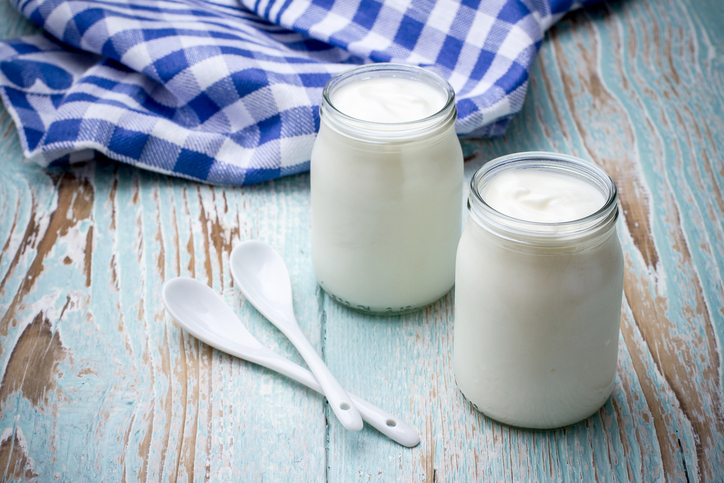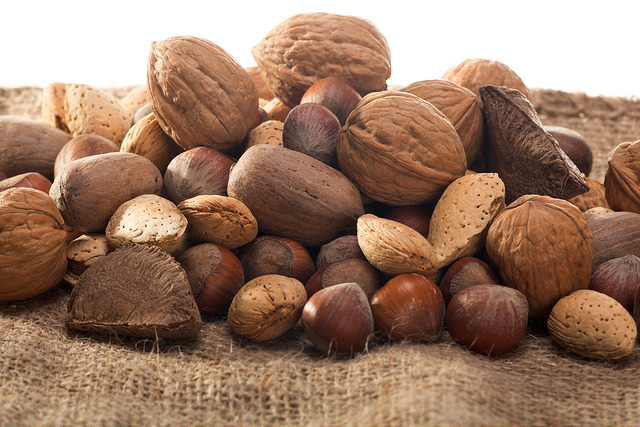Energy Foods: 5 Foods That Fight Fatigue
If you ever feel lethargic or fatigued after you eat, you’re eating the wrong foods. It’s that simple. The trick is to choose foods that release energy more slowly and give you a gradual boost of long-lasting energy — and to stay away from high-glycemic foods (that is, foods mainly made with white flour, sugar, or other simple carbohydrates) that deliver an immediate, short-lived boost but ultimately leave you feeling sluggish and tired.
Eating the right foods is especially important if you’re already feeling fatigued due to the stress of a hectic lifestyle, whether it stems from physical, mental, or emotional overexertion. After all, fatigue isn’t just a nuisance; if ignored, it can become chronic and put you at increased risk for disease.
But here’s a tip: You can fight fatigue, and you can do it with every bite you eat. These five foods fit the bill and then some, as they’re also easily digested and rich in nutrients that are essential to helping your body convert food into energy.
1. Oatmeal

Although oatmeal isn’t particularly low on the glycemic index, it outranks almost every other breakfast cereal and most whole-grain breakfast products. Oatmeal is also regarded as a super food when it comes to supporting digestive health. For those reasons, many medical practitioners and nutritionists not only allow their diabetic patients to eat oatmeal but actually encourage it, especially since oatmeal helps maintain normal blood sugar levels.
Why it works: Carbohydrates spend the least amount of time in the stomach, which means you get a quick boost of energy. But unlike processed, sugary cereals, whole oats don’t result in a sugar crash. The high dietary fiber content in oats helps you feel full longer, preventing overeating throughout the day, which can lead to weight gain, sluggishness, and fatigue. Fiber is also crucial to healthy digestion; the soluble fiber in oats feeds the beneficial bacteria in your digestive tract and prevents energy-draining constipation.
In addition to its high fiber content, oatmeal is a good source of nutrients such as magnesium, protein, phosphorus, and B1 (thiamine).
When to eat it: Eat oatmeal first thing in the morning for instant energy. Breakfast is especially important because it replenishes energy reserves and sets the tone for your day.
How to enjoy it: Go for old-fashioned, minimally processed organic oats, and avoid the instant and flavored varieties. Hint: Look for oats labeled “Scottish,” “Irish,” “steel-cut,” “thick cut,” or “Old-fashioned,” and you’ll be on the right track.
Extra credit: Sprinkle protein-rich flaxseed or nuts on top of your oatmeal for longer-lasting energy.
2. Yogurt

Yogurt is so creamy and flavorful, it can seem like a dessert masquerading as a health food. But the truth is, it’s really good for you, thanks to a power play of protein and gut-healthy probiotics.
Why it works: Because it’s soft, your body processes yogurt more quickly than a solid food, making it a great source of quick energy. But while you get a rapid result, it’s also long-lasting, thanks to a good ratio of protein to carbohydrates. Protein stays in the stomach longer than carbohydrates, which translates into a steady source of energy.
Yogurt also contains probiotics, beneficial bacteria that help maintain a healthy gut ecosystem by protecting against pathogens and helping your body eliminate harmful bacteria. Like fiber, probiotics are a powerful digestive aid. Recent research from the University of Toronto suggests that probiotics can help ease symptoms of chronic fatigue syndrome; in the study, probiotic supplementation appeared to boost levels of the amino acid tryptophan in the brain. Tryptophan is famously known as the component in turkey that makes you sleepy, but it’s also a precursor of serotonin, a neurotransmitter that helps induce sleep and promote feelings of calm and tranquility, helping to combat both physical and emotional fatigue.
When to eat it: Absolutely any time. Aside from its health benefits, one of the best things about yogurt is its versatility. It’s a great afternoon or preworkout snack because it will give you a quick hit of energy. But you can also add healthy toppings like oats, ground flaxseed, nuts, and fruit to make a hearty breakfast. The plain variety works well at the dinner table in place of sour cream or as a salad dressing base, and you can doctor it up with frozen berries for dessert.
How to enjoy it: Go for the Greek. Greek yogurt contains about twice the amount of protein as the regular kind, and it has a richer, creamier consistency, which makes it seems like an indulgence. Choose organic whenever possible.
Extra credit: Make yogurt your go-to breakfast at least three times a week for great digestive results. Bonus points if you choose low-fat, plain yogurt and add your own healthy toppings — try honey and golden raisins for a sweet snack.
3. Spinach

Spinach is chock-full of nutrients that are essential for helping our bodies perform at their peak. Not only is spinach one of the most iron-dense food sources on earth, it’s also extremely rich in magnesium and potassium and is an excellent source of energy-supporting B-vitamins.
Why it works: For those diagnosed with iron deficiency (a common cause of anemia, also known as low red blood cell count), getting more iron in the diet can help reduce fatigue. Red blood cells use iron to carry oxygen to the body’s cells. Low iron levels can cause both physical and mental fatigue, as well as anemia. Symptoms of anemia include tiredness, lack of energy, weakness, trouble concentrating, apathy, insomnia, and loss of appetite. Spinach and other leafy greens offer a high rate of iron for an extremely low caloric intake. Spinach also happens to be an excellent source of vitamin C, which boosts iron absorption. (Note: If you suspect you have iron deficiency or anemia, it’s essential to have a medical professional help you figure out why. Chronic blood loss from heavy periods or an oozing ulcer are common causes.)
Magnesium is another mineral that plays a vital role in the production of energy. In fact, it’s involved in hundreds of enzymatic reactions throughout the body and directly affects our cardiovascular, digestive, and nervous systems; muscles; kidneys; liver; and brain. It’s necessary for the production of energy, proper digestion, and the regulation of nerve and muscle tone. Even a slight deficiency can result in reduced energy levels, which causes your body to work harder and can lead to exhaustion. Symptoms of magnesium deficiency include imbalanced blood sugar levels, depression, muscle weakness, muscle cramps, muscle spasms, muscle soreness, body tension, low energy, fatigue, difficulty sleeping, confusion, and lack of appetite.
Like magnesium, potassium also helps muscles and nerves function properly. Use of diuretics (often prescribed to treat high blood pressure) is a common cause of potassium deficiency. Symptoms of potassium deficiency include muscle weakness, confusion, and fatigue.
When to eat it: For the amount — and array — of nutrients packed into these leafy greens, we’d all be better off if spinach made an appearance at every meal, every day. But let’s be practical. Incorporate spinach into your diet as much as you can, as often as possible. Try steamed spinach and organic, farm-fresh eggs for breakfast; tuck spinach into your sandwich at lunch; layer it in your lasagna at dinner. You get the idea.
How to enjoy it: You don’t have to resort to a spinach salad or side dish at every meal. Spinach is so mild you can add it to just about anything — soups, stews, casseroles, dips, smoothies, and stir-fries.
Extra credit: Fold pureed spinach into baked goods. No one but you will be the wiser, and everyone will be a little healthier for it.
4. Nuts and seeds

Nuts and seeds are nutrient-dense foods packed with high-quality protein and healthy omega-3 fats. Depending on the type you choose, you’ll also get decent amounts of manganese; magnesium; phosphorus; iron; copper; riboflavin; vitamins B1, B2, B5, and B6; and tryptophan — all of which are involved in the production of energy.
Why they work: Pumpkin seeds, almonds, cashews, and hazelnuts are all good sources of magnesium, which can help fight muscle fatigue. The tryptophan found in sesame seeds, sunflower seeds, pumpkin seeds, cashews, walnuts, and almonds battles emotional fatigue and promotes sleep, which can ease physical weariness. And all nuts and seeds are excellent sources of high-quality protein that our bodies can convert into lasting energy.
But what makes nuts and seeds such potent weapons in the war against fatigue is that they’re a rich source of omega-3 fatty acids. Omega-3s are known as essential fats because they’re the only fats our bodies actually require. These healthy fats not only lower the glycemic index of foods but are also a superior energy source. Fats stay in the stomach longer than carbohydrates and proteins; the result is a slow-burning fuel that provides long-lasting energy. Omega-3s help maintain healthy cells and are found naturally in almost all nuts and seeds. Flaxseeds and walnuts are particularly rich in these healthy fats. Omega-3s (and frequent consumption of nuts in particular) have been found to reduce the risk of becoming obese and aid in weight loss by slowing digestion, which results in a prolonged feeling of fullness, preventing extra snacking that can lead to weight gain, a common contributor to fatigue.
When to eat them: A daily dose of nuts is the way to go. Regular, moderate consumption is the key to reaping the health benefits of nuts and seeds. Prepack single servings to take with you during the day, and stash servings in the car as well as your desk, purse, or briefcase so you always have a healthy snack on hand. A serving is one ounce (about a small palmful).
How to enjoy them: Nutrition experts agree that combining protein and carbohydrates is one of the basic equations for immediate yet lasting energy. Carbohydrates are converted into energy right away, and protein provides a gradual boost. Some good protein-carbohydrate combinations include almond or peanut butter on whole grain toast, or a piece of fruit and some nuts.
Extra credit: Buy and eat nuts and seeds raw whenever possible for the best nutrition. Raw almonds are so sweet you’ll never go back to the roasted variety.
5. Beans

Beans have been called a miracle food, and with good reason. Along with the numerous other health benefits they provide, beans are on the frontlines when it comes to fighting fatigue. Beans are a concentrated source of stable, slow-burning energy due to their unique nutritional composition: All types are low in fat, high in fiber, and provide a good balance of carbohydrates and protein. Take your pick of beans; they have a low glycemic rating (to help you avoid blood sugar spikes) and are loaded with a rich array of minerals including potassium, magnesium, phosphorus, copper, and iron, all essential to producing energy. Additionally, super-performing beans — especially soybeans — are a good source of tryptophan.
Why they work: The protein and high fiber content in beans work together to help balance blood sugar and prevent spikes and dips in energy. The fiber also promotes digestive health, encourages bowel regularity, and helps prevent constipation and weight gain. Thanks to the protein in beans, you get a gradual source of lasting energy.
Beans make a terrific replacement for red meat, another rich source of protein and iron, but beans are lower in calories and are nearly fat-free. In addition, beans place a lesser burden on the digestive system than red meat, requiring less energy to be assimilated into the body. In other words, you’re a lot more likely to feel tired and heavy after eating a steak than you are after eating a serving of beans.
When to eat them: Beans can work at any meal. Try some simple combinations for different times of day.
- Beans for breakfast: For a healthy version of huevos rancheros, skip the tortilla and cheese, and top one cup of black beans with two poached eggs, half an avocado, and a side of salsa.
- Beans for lunch: Make it easy with simple swaps. Substitute a black bean patty for your beefy burger, or try a cup of vegetarian chili in place of the soup du jour.
- Beans for dinner: Try three-bean salad. Mix a half cup each of red kidney beans, cannellini beans, garbanzo beans (chickpeas), diced red onion, and diced green bell pepper. Toss with a tablespoon of olive oil, two tablespoons of red wine vinegar, and a handful of chopped fresh parsley. Tip: It gets tastier if you let it marinate a few hours before serving.
How to enjoy them: Don’t banish beans to the realm of side dishes and salad toppings. Beans make a great snack food, too. Snack on boiled soybeans topped with a sprinkling of sea salt, or make a simple dip by blending one cup of any type of beans, a tablespoon of olive oil, one chopped garlic clove, and spices to taste.
Extra credit: Sneak some spinach into your bean dip for added nutrition. Bonus points if you serve it with crudités.






